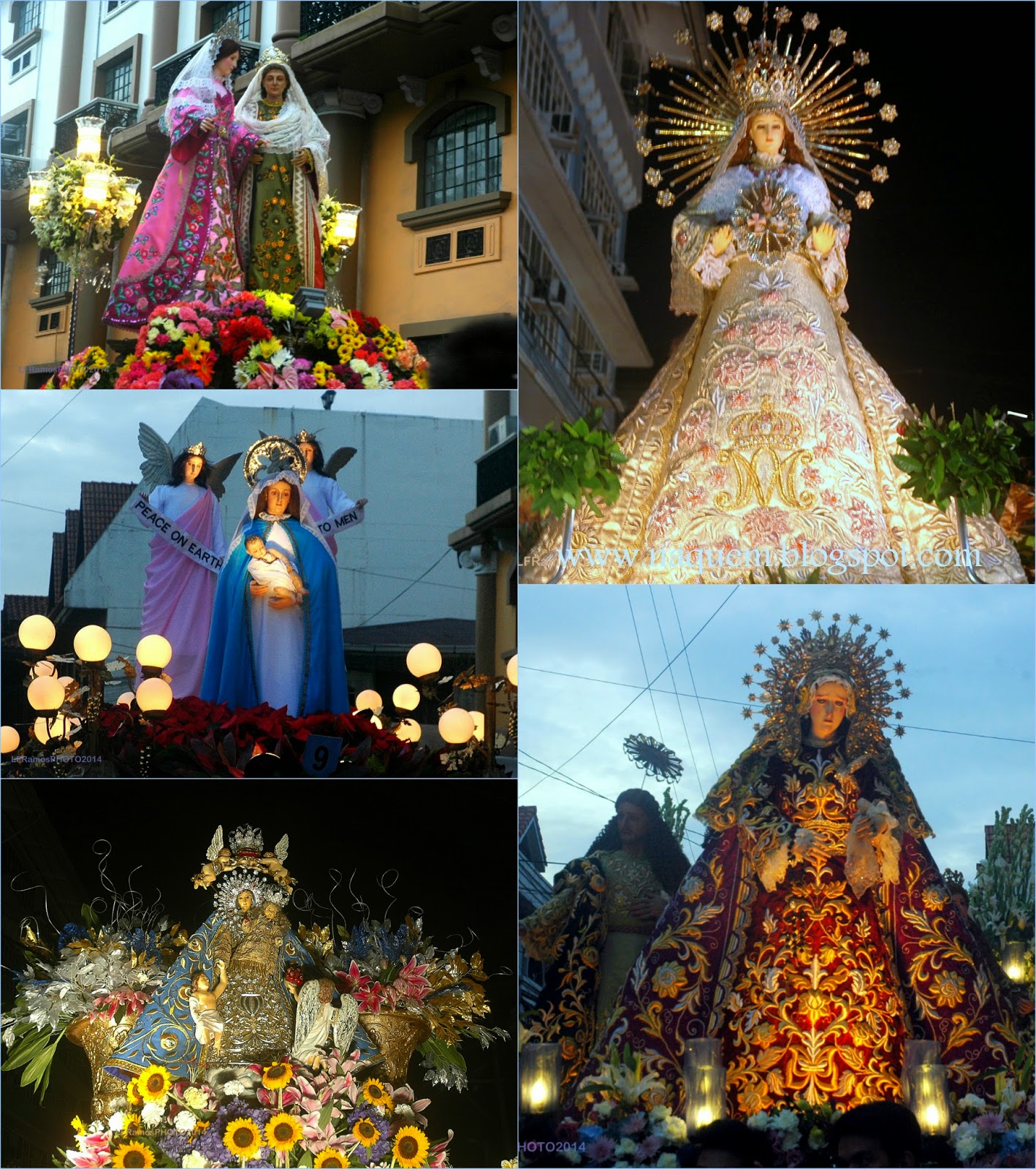 |
| Aftermath of Hagupit in Catbalogan, Samar village. Photo by Rommel L. Rotor. |
The alerts on possible flash floods, landslides and storm surges went out as Hagupit/Ruby moved towards the Eastern Visayas. Most threatened were the Samar provinces. The Public Storm Warning Signal (PSWS) escalated from number 2 to 3 from December 4 to around midnight of the 5th.
 |
| Catarman, Samar folks crossing flood waters. Photo by Gabriel Nabong Caalim. |
Morning of the 5th, our friend Charo, fellow history researcher and netizen from Samar, posted that she was packing her archival documents and books in plastic for storage, hoping that no storm surge will reach them. Their house in Catbalogan is about 40 meters from the sea, and they would be evacuating to a safer house far from the coast.
 |
| Procession passing by replica of Spanish-era house. |
For sure, residents of Metro Manila monitored Hagupit/Ruby through the PAGASA Weather Bulletins, social media postings and the TV weather reports.
The typhoon was hardly felt on the 6th. Even then, many prayers could have been said for the protection of communities under siege by the fierce winds and heavy rains of Hagupit/Ruby. It can be said that the Marian devotees included pleadings that the procession of the 7th honoring the Blessed Virgin Mary in Intramuros, Manila be not spoiled by rains.
 |
| Hooded Marian procession participants. |
Netizens posted that the Catbalogan City DRRMC and Coast Guard confirmed that there was no storm surge in the city, that there was flooding but this was caused by the extremely heavy rains. The posts also identified coastal and island municipalities of Samar that were hit hard: Talalora, Sta. Rita, Villareal, Zumarraga and Daram where majority of houses were completely damaged.
From our friends Facebook posts, we learned that the small town of Dolores survived the biggest typhoon so far that had hit the area although there were three casualties. The mayor of Daram had a more detailed report from 46 barangays of what had been washed out or partially/totally destroyed: farms, houses, schools, wharves, motorized boats and bancas, but there were no casualties.
 |
| Marian procession participants. |
Undaunted by the prospect of rains, thousands of Marian devotees joined the procession, many of them accompanying the popular images of the Nuestra Señora (Our Lady) with various titles from provincial towns like the Pilar of Imus, Cavite; Aranzazu of San Mateo, Rizal; Fátima of Valenzuela, Bulacan; Ina Poon Bato of Botolan. Zambales; Divina Pastora and Soledad, both from Nueva Ecija; Salambao from Obando City, Soledad de Porta Vaga, Merced and Remedios, both from Pampanga, Casaysay from Lipa, Batangas, among many others. There were brass bands like the Obando and Pakil town bands playing anthems associated with particular icons.
It’s the large delegation from Pakil, Laguna, seemingly almost all the Catholics of the town, which has captured our admiration in the past years. Just as they do in their town during her fiesta in September, they come to sing and dance the turumba on the streets of Intramuros in honor of their Nuestra Señora de los Dolores (Our Lady of Sorrows).
According to Pakil folklore, the first turumba dates back to 1788, and the term is derived from “natumba sa laki ng tuwa,” meaning rolling down from joy. The first two lines of the turumba song goes: “Turumba, turumba Mariangga, Matuwa’t tayo’y magsaya / Sumayaw sa tu-turumba, Puri sa Birheng Maria (Singing and dancing to honor the Virgin Mary).”
The rains came to Metro Manila on Monday, 8th December; signal number 2 was raised in the morning but reduced to 1 before midnight. The rain was moderate, and there were no accompanying gusty winds. Tuesday, 9th December, was still wet but Hagupit/Ruby was already moving out to the West Philippine Sea.
We read from Facebook posts of the Catbalogan City mayor's post-Hagupit/Ruby statement. “Another miracle!", she said, We survived Yolanda, we survived Glenda and now we survived Ruby!” She spoke of the city as a ship that has finally docked after a very rough journey. As ship captain, she said, she was very much fortunate and thankful that her passengers were very cooperative during that night sailing.
She could very well be speaking for all the villages, towns and cities that suffered heavily from Hagupit. They’re starting all over again, picking up the pieces with assistance from government and non-government organizations, from friends and town mates here and abroad.
No rains fell on the jubilant devotees of Mary who lit candles, sang or dance in her honor during the procession around Intramuros. as
